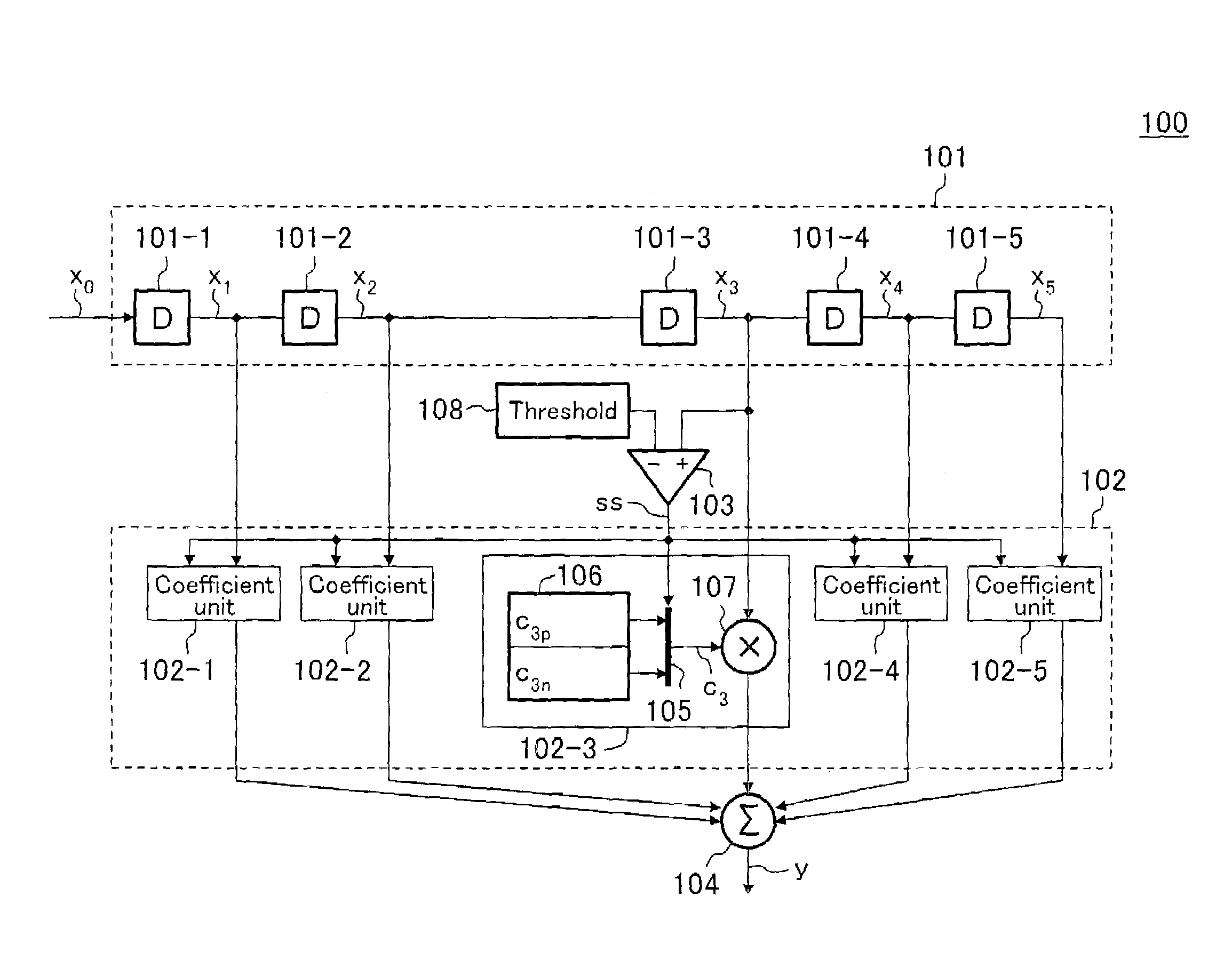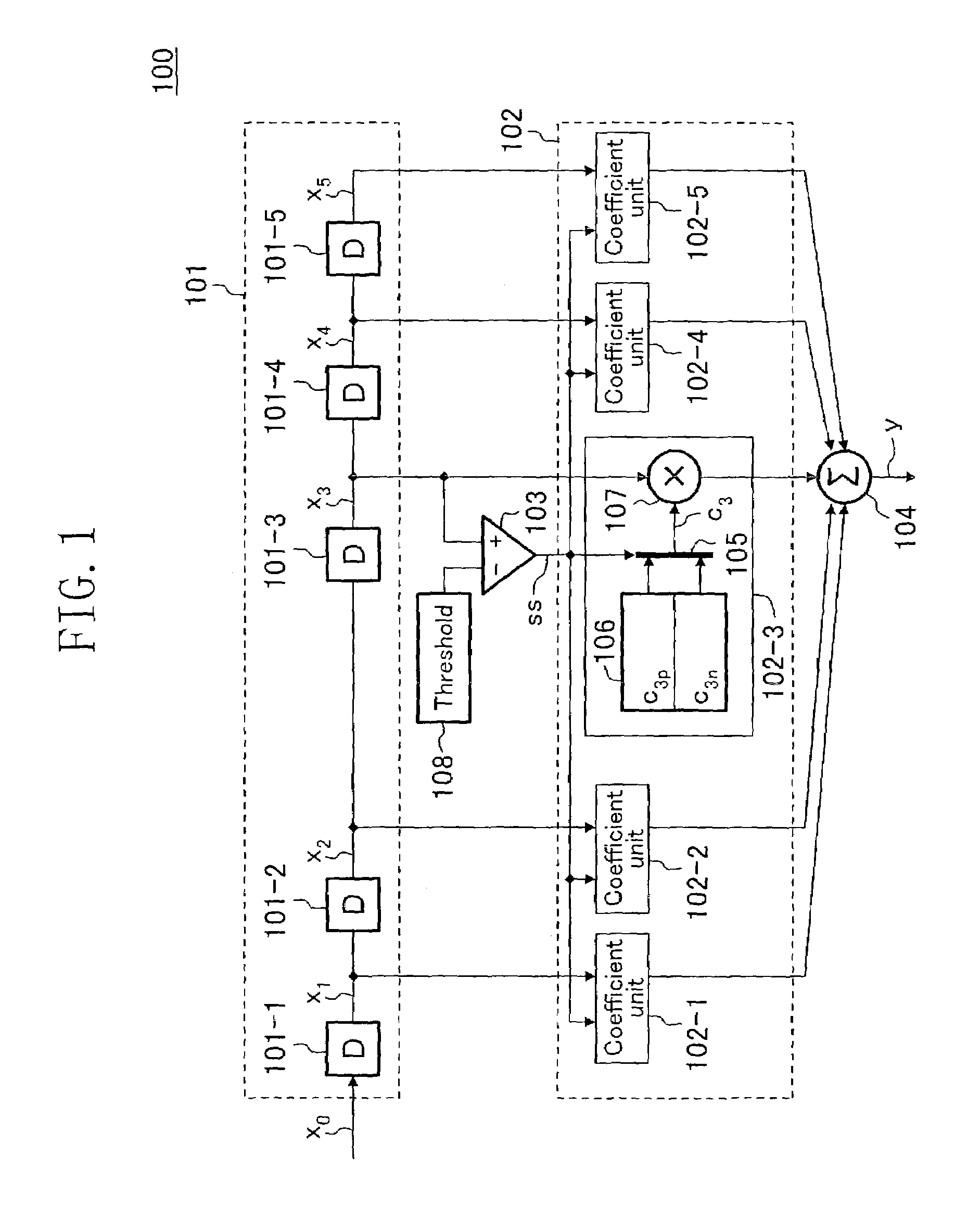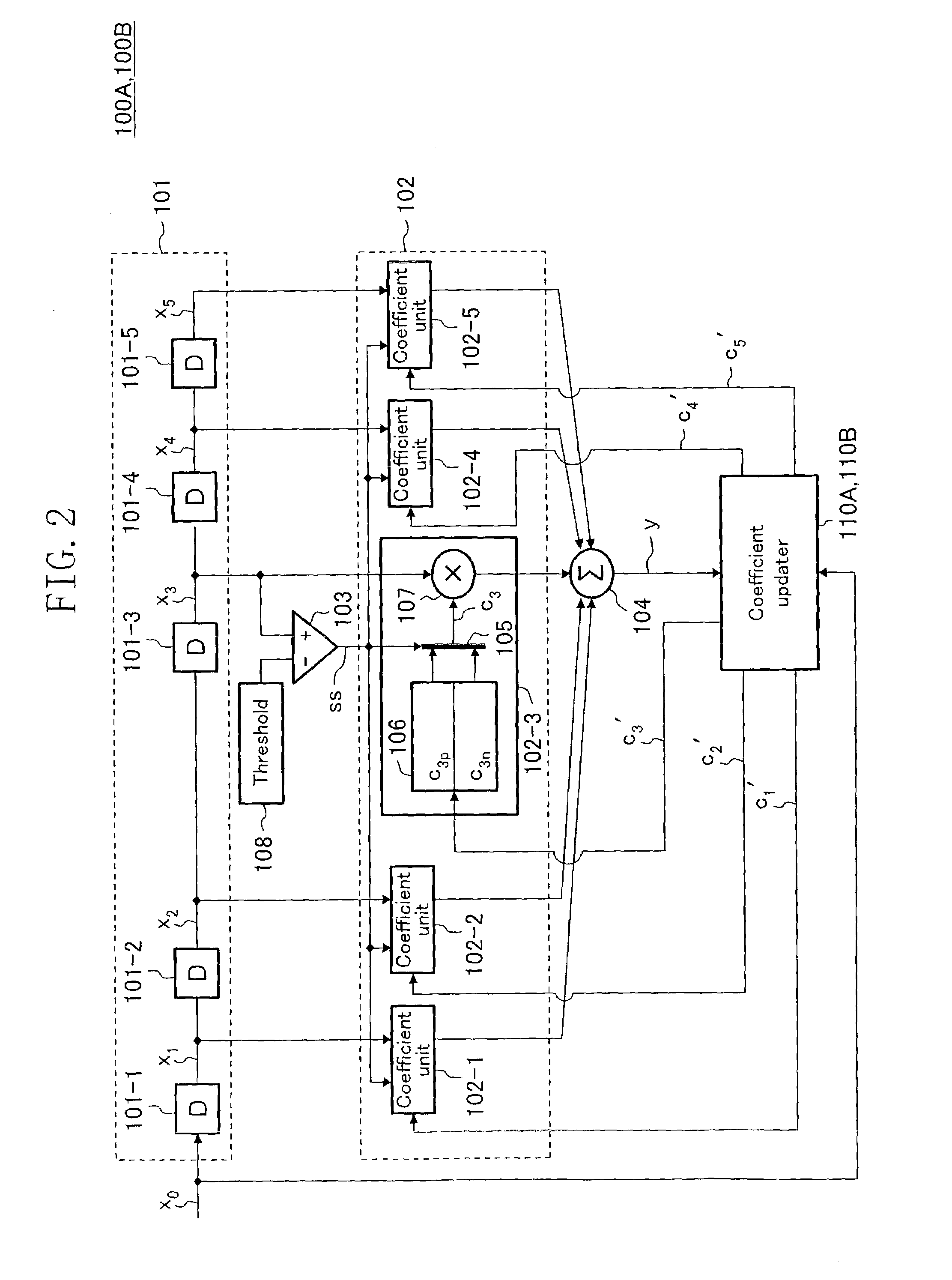Equalizer and reproduction signal processing device
a signal processing and equalizer technology, applied in the field of equalizers and reproduction signal processing devices, can solve the problems of inability to perform intended convolution operations, difficult to accurately compensate for non-linearity of input signals, etc., and achieve the effect of higher waveform equalization performan
- Summary
- Abstract
- Description
- Claims
- Application Information
AI Technical Summary
Benefits of technology
Problems solved by technology
Method used
Image
Examples
first embodiment
[0038]FIG. 1 illustrates the configuration of an equalizer 100 of the first embodiment of the present invention. Herein, the number of taps of the equalizer 100 is assumed to be 5 for the purpose of illustration. Note that in the present invention, the number of taps is not limited to 5, but may be greater or less than 5.
[0039]The equalizer 100 includes a signal delay section 101 including a plurality of delay elements 101-i (i=1 to 5 for this and other designations with “-i”), a coefficient multiplication section 102 including a plurality of coefficient units 102-i, a comparator 103, and an adder 104. Note that the comparator 103 corresponds to the selection signal production means of the present invention.
[0040]The signal delay section 101 receives the input signal x0 and outputs the tap signal xi (i=1 to 5). Each delay element 101-i outputs the tap signal xi by delaying the signal received by the delay element 101-i by one clock cycle.
[0041]Each coefficient unit 102-i includes a ...
second embodiment
[0052]FIG. 2 illustrates the configuration of an equalizer 100A of the second embodiment of the present invention. The equalizer 100A is similar to the equalizer 100 of the first embodiment, but further includes a coefficient updater 110A.
[0053]The coefficient updater 110A calculates new tap coefficients ci′ for tap coefficients ci selected by the coefficient units 102-i, respectively, and updates one of the tap coefficients cip and cin in the coefficient units 102-i that is being selected to the tap coefficient ci′. Note that the calculation of the tap coefficient ci′ is performed according to the LMS (Least Mean Square) algorithm, for example.
[0054]According to the LMS algorithm, the tap coefficient ci′ is given as a tap coefficient ci(nT+1) in Expression (2) below. In Expression (2), T is one clock cycle, n is an integer, ci(nT) is the tap coefficient at time nT, e(nT) is the equalization error (i.e., the difference between the actual value of the waveform-equalized signal y and ...
third embodiment
[0059]FIG. 2 illustrates the configuration of an equalizer 100B of the third embodiment of the present invention. The equalizer 100B includes a coefficient updater 110B having a different configuration from that of the coefficient updater 110A of the second embodiment.
[0060]FIG. 4 illustrates the configuration of the coefficient updater 110B. The coefficient updater 110B includes a multiplexer 117, a demultiplexer 118, a coefficient selection circuit 119, and one coefficient learning unit 120. Among these components, the multiplexer 117, the demultiplexer 118 and the coefficient selection circuit 119 correspond to the coefficient selection means of the present invention.
[0061]The multiplexer 117 selects one of the selected tap coefficients c1 to C5 that are selected by the coefficient units 102-1 to 102-5, respectively. The demultiplexer 118 selects one of tap coefficients c1′ to c5′ to which the output of the coefficient learning unit 120 is provided.
[0062]The coefficient selection...
PUM
| Property | Measurement | Unit |
|---|---|---|
| size | aaaaa | aaaaa |
| width | aaaaa | aaaaa |
| threshold | aaaaa | aaaaa |
Abstract
Description
Claims
Application Information
 Login to View More
Login to View More - R&D
- Intellectual Property
- Life Sciences
- Materials
- Tech Scout
- Unparalleled Data Quality
- Higher Quality Content
- 60% Fewer Hallucinations
Browse by: Latest US Patents, China's latest patents, Technical Efficacy Thesaurus, Application Domain, Technology Topic, Popular Technical Reports.
© 2025 PatSnap. All rights reserved.Legal|Privacy policy|Modern Slavery Act Transparency Statement|Sitemap|About US| Contact US: help@patsnap.com



